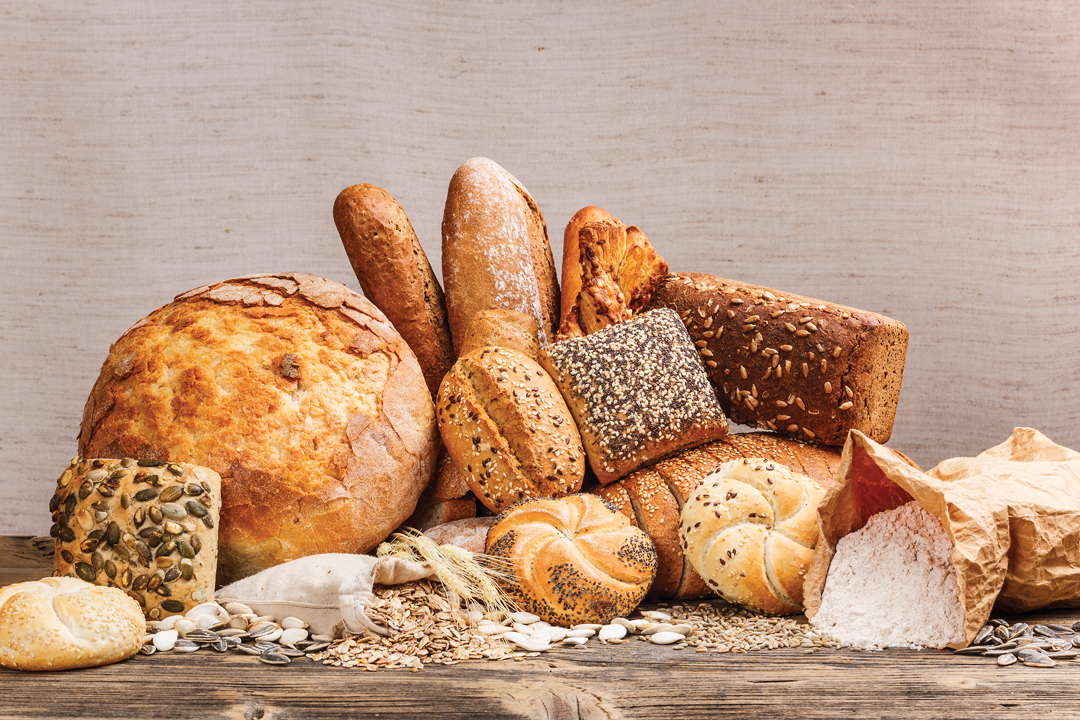RESTAURANT RADAR
BY IAN DOIG • PHOTO: SHUTTERSTOCK
There’s much discussion in agriculture about connecting with consumers. Cravings change and so do ideas about what food to eat and why. Restaurants and foodservice businesses are quick to react. Chefs and restaurant operators provide a useful barometer of the ebb and flow of consumer demand.
“Keeping up with these trends can help businesses diversify their menus and operations to meet the demands of changing demographics,” said Shanna Munro, Restaurants Canada president and CEO. From March 1 to 3, the organization presents its annual tradeshow in Toronto. Welcoming 20,000 attendees, RC Show assists the Canadian restaurant sector in keeping up with the progression of food trends.
Also part of this national organization’s efforts to identify current and future food trends, the Restaurants Canada Chef Survey compiles the input of 300 chefs from across the nation. While the gluten-free trend has become a fixture on restaurant menus, it does not appear within the 2019 survey’s Top 10 hot trends list, nor its up-and-comers list.
Craft beer takes the top hot spot, while plant-based burgers and sausages is No. 5. And while cannabis-infused drink and food take the first and second slots respectively in the emerging trends list, protein-rich grains and seeds is No. 5.
GrainsWestrecently discussed the nature of Canadian food trends with Munro.
GrainsWest: How important is it for the foodservice industry to understand and respond to consumer food trends?
Shanna Munro: From 2010 to 2019, Canada’s foodservice industry was the fastest-growing industry in Canada. More consumers looked to enjoy a variety of innovative meals and beverages from Canada’s more than 120,000 establishments. During that time, we’ve seen a dramatic change in the foodservice landscape such as the growth in plant-based options and the rise of third-party delivery services.
The foodservice industry is a leader in innovation, coming up with new ways to attract guests in this very competitive environment. As such, [restaurant] operators need to understand current and future food trends to position themselves for success.
GW: With health consciousness being an overarching trend, novel ingredients are clearly in demand. Is there room for healthy but less exotic ingredients? Whole grains for example.
SM: For sure. An increasing share of consumers are looking for healthy options at restaurants. In a recent survey of restaurants, Restaurants Canada found that some of the most requested [foods by restaurant patrons] are gluten-free, vegetarian/vegan and natural/unprocessed.
Seeing these items on the menu is becoming the new normal. Guests just expect them. Exotic ingredients can add flare to a menu, but there will always be interest in traditional healthy foods such as whole grains. The same survey also found that 53 per cent of restaurants have either recently expanded or are planning to expand their menus to include more healthy items in 2020.
GW: How much consumer interest is there in plant-based proteins?
SM: Huge interest. From our survey, 66 per cent of operators said that guests have requested vegetarian items and 61 per cent have requested vegan menu items. From this same survey, 58 per cent of foodservice operators offer plant-based alternatives on their menu. In the 2019 Restaurants Canada Chef Survey, plant-based burgers and sausages ranked as the fourth hottest trend on Canadian menus. In 2020, you can expect to see plant-based proteins and other protein alternatives such as insects continue to appear on menus.
GW: The use of local ingredients is identified as the No. 5 trend on the 2019 hot list. Has that trend evolved over recent years? Are consumers, restaurateurs and chefs connecting effectively with farmers and vice versa?
SM: Local remains among the most popular trends on Canadian menus, both for consumers and chefs. Local continues to grow as 41 per cent of operators said they will be adding more locally sourced foods to their menus in 2020. There is also the perception that local foods are fresher than food flown in from somewhere else.
GW: Producing food experiences for social media is important to restaurants. Is there room for farmers to be part of this aspect of food and restaurant marketing?
SM: Definitely. Consumers are becoming more conscious of food traceability and enjoy the opportunity to see where their food comes from. Farmers can share photos of life on the farm and develop recipes giving consumers and restaurateurs dish ideas. Farmers can do this through their own marketing channels, but also work collaboratively with restaurant partners to showcase the farm to table journey.
GW: Are there examples you can cite of farmers collaborating with chefs or food industry groups to tackle food trends?
SM: Restaurants Canada has done this and continues to do so. We’ve held workshops that brought in farmers and restaurant owners, operators and chefs to facilitate conversation and look at ways the groups can work together.
At the upcoming RC Show, we’ll have chefs who work with farming associations sharing recipes and ideas and demonstrating how chefs and operators can bring these dishes into their own restaurants. We’ll host an “ask the farmer” session, where chefs and restaurateurs can engage in collaborative dialogue with the farming community.







Comments